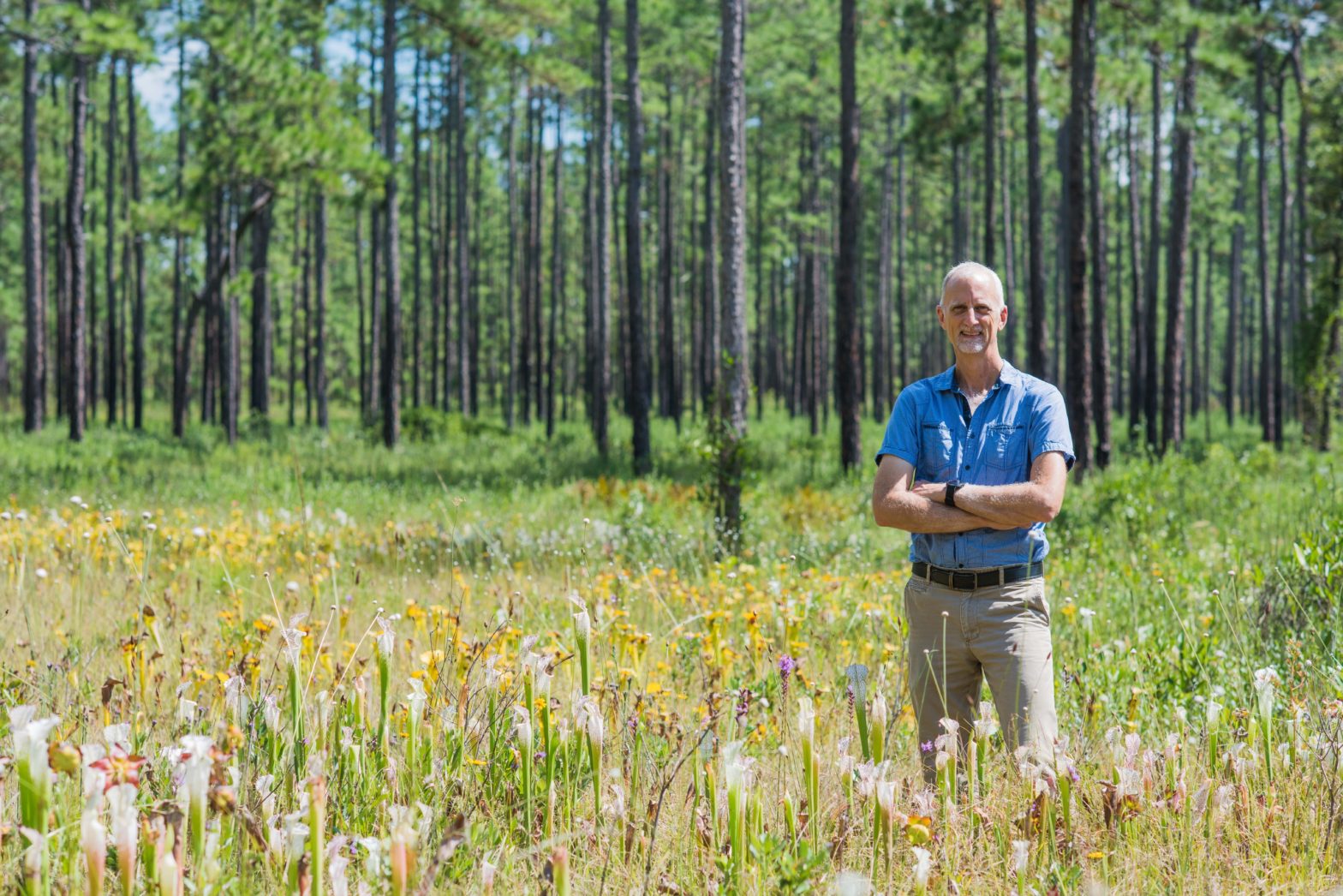![Vernon Compton, director of the Gulf Coastal Plain Ecosystem Partnership, stands in restored longleaf pine forest in Blackwater River State Forest. Longleaf pines once dominated the Southeast United States. Demand for the timber and turpentine throughout the 1800s decimated the forests. The fire-dependent pine is one of the longest-lived southern pines, some reaching 250 years old. [Special to the Press Gazette]](http://127.0.0.1/wordpress/wp-content/uploads/2022/01/ghows-DA-5e839daa-d57d-5213-e053-0100007f60c1-2da92b84-scaled.jpeg)
PENSACOLA — Grooming future conservationists, reintroducing keystone species to their natural habitat and teaching private landowners to join longleaf pine forest restoration efforts in our region are among the projects being funded in this year’s Gulf Power-supported Gulf Coast Conservation Grant Program and Longleaf Stewardship Fund.
GULF COAST CONSERVATION GRANT PROGRAM PROJECT
The project will protect river flow to benefit habitat for six federally listed mussel species, Gulf sturgeon and a host of other endemic species native to the Chipola River and ACF basin.
LONGLEAF STEWARDSHIP FUND PROJECTS
Among the Longleaf projects, there are three in and adjoining the Gulf Power service territory in Northwest Florida that will help continue restoration work that supports recovery of imperiled species and expansion of the native landscape impacted by decades of development and logging.
"Gulf Power understands that playing a role in restoring the ecosystem is intrinsically linked to the quality of life of our customers and economic viability of the region we serve," said Jeff Cole, Gulf Power’s Environmental Stewardship coordinator. "By investing in a landscape approach to restoration through this grant program, the projects being funded make a larger impact on critical habitat countless plants and wildlife species depend upon.
"We’re happy to continue a long history of supporting these grants and providing volunteers to help with the work on the ground."
Projects include:
The project will benefit Tyndall Air Force Base, improving habitat both on and off the base for numerous wildlife species including the eastern indigo snake, a federally threatened species, as well as the gopher tortoise and Bachman's sparrow.
"The $300,000 grant is definitely one of the major grants that keep us going," said Brian Pelc, the Nature Conservancy Restoration specialist. The Nature Conservancy is one of more than a dozen public and private landowners on both sides of the Apalachicola River that make up the alliance.
The grant will also help continue a forestry management program with the Boy Scouts in February, in partnership with other agencies such as the Florida Fish and Wildlife Conservation Commission.
"The scouts come out and learn about such things as longleaf pine and ground restoration, the red-cockaded woodpecker and prescribed burns," Pelc said. "We’re trying to grow a generation of new land managers. For many young people, it’s not a career consideration but it’s essential because we’re facing a lack of recruits in the pipeline.
"It’s a good opportunity for mostly city kids to get out into the woods."
The project will translocate 140 gopher tortoises, a candidate species for possible listing under the Endangered Species Act, to high-quality, managed land. And the grant will provide technical assistance and educational opportunities for private landowners, including a longleaf academy to teach them how to restore their own lands.
Vernon Compton, director of the Gulf Coastal Plain Ecosystem Partnership, said a large part of the $300,000 grant his organization has been awarded will be used in the Blackwater River State Forest in Santa Rosa County.
"We’re super excited to get this grant," he said. "This is very important to the restoration effort and a critical component of the many successes we’re seeing on the ground across the longleaf pine range and habitat improvement."
The grant dollars will also support reintroduction of the gopher tortoise to the Eglin Air Force Base Reservation and the Conecuh National Forest, which adjoins Blackwater River State Forest to its north in Alabama.
"Thanks to habitat restoration on these sites, they are ready for the keystone species to be reintroduced," Compton said. "They will be saved from places in Central Florida that are being developed, where they would have been lost or entombed. We’ll dig them out and save them and truck them up here."
Compton explained the longleaf pines were once the dominant ecosystem in the Southeast United States. Clearcutting to make way for farms, plantations and urban development, extensive logging, along with the suppression of fire critical to the germination of the pine’s seedlings, led to a dramatic decline in the ecosystem.
Ralph Costa, a wildlife biologist leading the project, said the birds will be taken from the Apalachicola National Forest. The forest has thriving populations due in part to longleaf pine habitat restoration funded with Gulf Power-supported grants. Those birds will be sent to Mississippi, Alabama and South Florida.
The red-cockaded woodpecker, once common to the southeastern United States, is now considered endangered. Through the relocation program –– many of them funded by Gulf-supported grants for more than 13 years –– Costa said their numbers are growing, a trend that underscores the success of longleaf pine restoration efforts.
"These birds are driving longleaf pine restoration because, in the places we are moving the birds, the habitat has to be in prime condition," Costa said.
The grants are part of NFWF’s Longleaf Stewardship Fund, a public-private partnership that includes Southern Company, the U.S. Department of Agriculture's U.S. Forest Service and Natural Resources Conservation Service, the U.S. Department of Defense, the U.S. Fish and Wildlife Service, International Paper’s Forestland Stewards Initiative and Altria.
The Longleaf Stewardship Fund builds on the success of the Longleaf Legacy program, a partnership between Southern Company and NFWF, which for eight years invested more than $8.7 million in projects to restore more than 87,000 acres of longleaf pine forest and the native species that rely on the habitat.
This article originally appeared on Santa Rosa Press Gazette: Gulf Power’s conservation work continues
